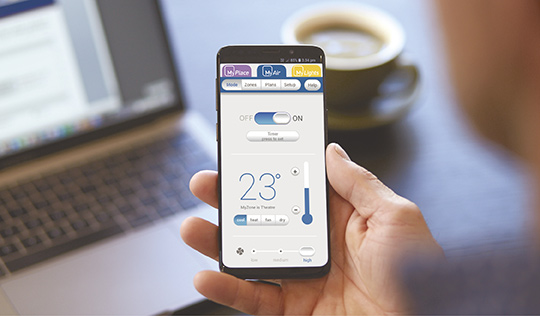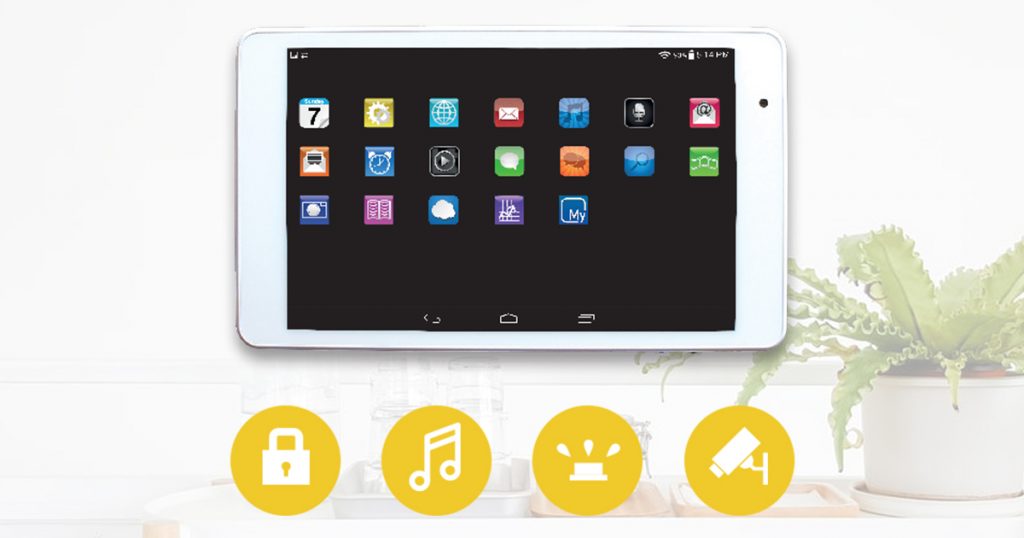There’s no doubt about it: 2017 was the year of the smart home. In fact, the revenue in the Australian smart home market this year alone amounted to approximately $823 million and is expected to show an annual growth rate of 24.6% by 2022.
Proving that Aussies cannot get enough of smart homes and the power it gives them to exact complete control over their living space, the smart home is expected to grow from strength to strength in the years to come.
So what should homeowners expect to see from the smart home in the new year? Here’s our top 3 predictions for the hottest smart home technology trends to take 2018 by storm.
But First, What is a Smart Home?
As the idea of the smart home and other related terms continue to grow in popularity, there’s become a bit of confusion around what a smart home actually is. So, what makes a home smart?
A smart home is a home that’s equipped with network-connected products for controlling, automating and optimising functions. These functions include everything from room temperature to lighting and are controlled either remotely by a phone or tablet or a separate system within the home itself.
The remote control monitoring of individual devices and, if applicable, their direct communication with one another (the Internet of Things), is an essential component of home automation and is what makes these smart products smart.
Advantage Air’s Predictions
1. Working out the Kinks
Smart home products are making their way into every part of our lives. In 2017 we saw an absolute explosion of smart products for the home at every life stage. From robots that read bedtime stories to your kids to devices that feed your cat and play with your dog, there’s a smart product out there for everything.
And now thanks to recent technological developments, voice recognition and artificial intelligence (AI) are taking smart home products to the next level. In fact, smart home products are expected to be the fastest growing segment in the Internet of Things (IoT) sector, with a predicted global growth of over 57% within the next 3 years.
With in-home, voice-activated virtual assistants such as the Google Assistant on the Google Home and Alexa on the Amazon Echo only just hitting our shores, they have truly taken off in Australia. And while these AI-powered devices are expected to move into more and more homes in the new year, they still have their limitations.
As convenient as this technology can be by allowing you to use your voice to control it, these new home automation devices to market come with their own set of consumer privacy risks. Devices like the Google Home and Amazon Echo are programmed to listen for certain keywords to wake them up to do their jobs, which has put into question this past year whether they can be trusted to maintain privacy.
Therefore, working on these privacy kinks as well as focusing on the user experience such as the quality of conversation design and practical implementation will be the differentiator between successful and unsuccessful brands moving forward. As a result, a big task for tech giants in 2018 will be preparing to add extra features in an attempt to make these devices more useful and secure.
2. Reliability Matters
Despite all the growth and improvement in the smart home market, one of the major concerns going into 2017 was that many of the smart home products being sold didn’t work reliably or sometimes didn’t work at all. With defects in some of the products seen as leading the field, there’s clearly still a long way to go.
According to John Davidson in an article for the Australian Financial Review two years ago, “we spent a lot of time in 2016 setting up phone controlled, Internet enabled home automation – the so called “Internet of Things” – and for the most part we found the devices to be hopelessly unreliable.”
One of the main issues with these standalone systems is that they’re very limited in regards to the other systems they’re compatible with. For example, when it comes to smart lighting the Google Home is only compatible with Phillips Hue. On top of this, many of these new automated lighting systems become disabled when turned off at the light switch.
So in an effort to make these devices more reliable, WiFi systems that can be hardwired will be a top priority in 2018. Unlike wireless or voice only system which can be intermittent, Advantage Air’s MyPlace is a hardwired system. Its switch doesn’t act as a powerpoint, which allows you remote access to every light in your MyPlace system, all the time, from where ever you are in the world. Very few smart home control systems are truly this smart, and those that aren’t result in a loss of remote access if the light is switched off at the wall.
As a result, we will see more reliable smart home products boasting the 4 C’s (comfort, control, convenience and connectivity) begin to take over the market. At the end of the day, people crave convenience and the main appeal of smart products is to make their lives simpler. So if a device cannot consistently achieve this for the owner, then they will not be of use to them.
For people who want smart products for their home, MyPlace by Advantage Air is the obvious choice. Our team of 12 R&D engineers have designed, manufactured and thoroughly tested the technology in Australia, to ensure that the technology works not just once, but every single time.
We also focus on developing a product that does the basics simply and very well, resisting the urge to provide lots of features which people often don’t use but increase the chance of something going wrong. Then, we have ensured there are local people with the knowledge and training to provide meaningful after sales service and technical support if you require it.
3. Connectivity is King
In order for the smart home to reach critical mass, separate devices need to get better at communicating. So in 2017 companies began to understand that their products, no matter how cool, couldn’t exist in a bubble by themselves. As a result, we began to see interconnection move the smart home forward and in 2018 this is only expected to grow.
Control hubs that connect sensors and actuators with remote controls and to each other will take the smart home to the next level in the new year. And as daily life migrates online, homeowners are beginning to realise how handy it is to have a dedicated tablet for the home.
The Advantage Air MyPlace control panel seamlessly integrates with the MyAir smart air conditioning system so you can adjust your air con, lights, garage, blinds and more from one centrally located hub that’s always powered and wall mounted so it never goes missing.
Intuitive to use, the MyPlace home hub can run other smart systems too, which simplifies the amount of control panels you need. Load it up with Android apps for your alarm system, CCTV cameras, security gates, Sonos, reticulation, curtains and much more. You can also keep track of the family’s calendar, check emails, order groceries, play music, pay bills and so much more.
What are your thoughts? We cannot wait to see how it unfolds in 2018, but one thing we know for sure is that it’s going to be a huge year for smart home technology! For more information about taking your home to the next level with smart products like MyPlace and MyAir, contact Advantage Air today.


